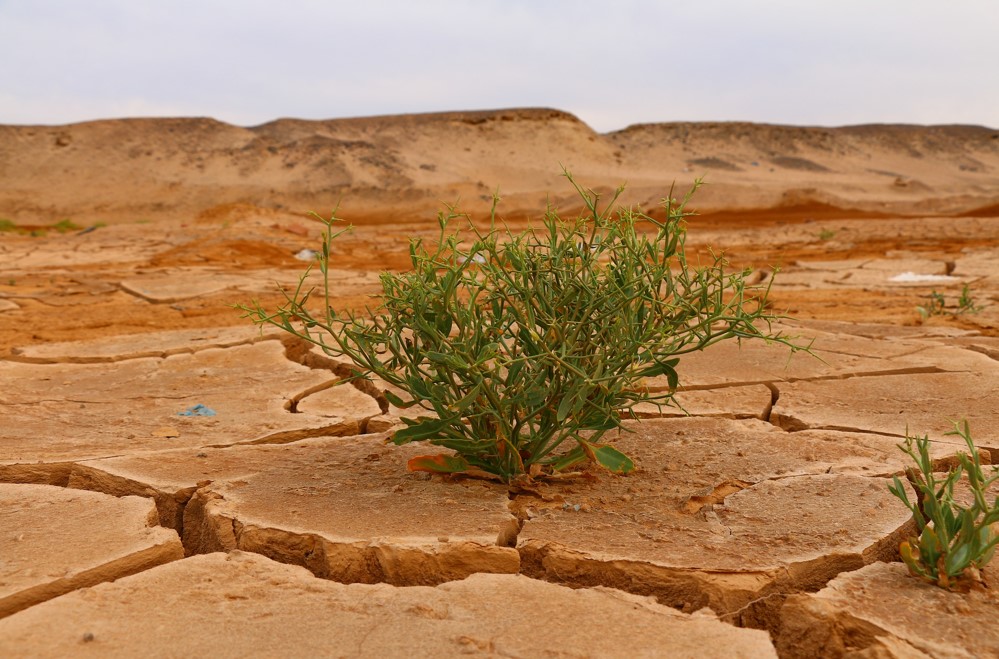The Greek philosopher, Heraclitus, said: “Change is the only constant.” From time immemorial, the world’s climate has been changing. The global surface temperature first began being monitored in 1880 through a network of ground- and ocean-based sites. The data shows clear evidence that over the last century, the average surface temperature of the earth has increased by about 17 oC. The eleven warmest years all occurred after 1980, with 1995 as the hottest recorded.
Also, in the last century, global mean sea level has risen by 25 centimetres. Melting glaciers have contributed to this increase, and soil that was once frozen in the arctic is thawing too. This is all due to climate change. Melting ice caps and tundra warming is causing additional rot of organic matter and the discharge of trapped carbon and methane, thus contributing to an increase of greenhouse gases.
In this same period, Africa has been subjected to inconsistent rainfall patterns that have led to flooding in some areas, and droughts in others. This negatively impacts on agriculture by lowering production and intensifying food insecurity. This has caused food prices to skyrocket, simultaneously forcing poverty-stricken rural inhabitants to move to ill-equipped urban areas, or to migrate to other nations, including those outside Africa.
Some local markets have already destabilised, and food insecurity has seen some African governments collaborate with other neighbouring and regional countries to boost their importation of grains, where in other countries, economic growth is stunted. This all speaks of a worsening status quo and continuing threat to agricultural investment.
The gross domestic product of sub-Saharan Africa is expected to be reduced by up to 3% by 2050 due to climate change. How African countries will navigate away from this impeding disaster is paramount, especially considering that one in every three Africans live below the global poverty line. This means over 400 million people are living on less than USD1,90 per day.
According to Worldometer, the current population of Africa is 1,4 billion. In 2050, Africa’s total population could reach 2 billion, almost double what it is now. That is why African governments need to employ robust measures and policies to help prevent the impending agricultural disaster in both the private and public sectors.
Last year, the rural population of sub-Saharan Africa stood at 667 million according to Macrotrends, which represents approximately 4,8% of the continent’s population. Though such a percentage seems small, this population is most vulnerable when it comes to climate change. Thus, more investment must be made to improve relevant agricultural project uptake, access to information, funding, markets and expertise to stimulate growth in these areas.
Image 1 and 2: The acute effects of climate change lead to inconsistent rainfall patterns in Africa, causing severe floods in one area and serious droughts in others (Source: Pixapay)
City and town planning must keep the effects of climate change in mind, and local governments should focus on geographical planning that consider weather driven migration and space allocation that promotes and stimulates urban farming to meet the needs of the growing population. Sustainable agricultural growth should also be encouraged in rural areas.
The past decade has seen an increased development of precision farming which governments should still support. More farming should use clean energy such as solar power, and micro-irrigation that reduces water wastage. Improved access to technology and the internet promote the growth of precision farming or precision agriculture (PA), which is a method of farm management that utilises information technology (IT) to ensure that crops and soil receive exactly what they need for optimum health and productivity. PA is also known as satellite agriculture and site-specific crop management (SSCM).
Access to weather and climate information, especially for women who make up a large percentage of the agricultural workforce and are the most vulnerable, is necessary. Information aids to boost production in agriculture through more knowledgeable decision-making.
Funding by most African governments towards research and development when it comes to agriculture, is still quite low in most of sub-Saharan Africa. Few inventions utilised in Africa are developed in Africa, therefore most of the countries rely on technology developed in first-world countries. Sadly, the technology and developments applied from the developed countries are not always the best for Africa, and Africa therefore lags second or third on a global scale. Africa only receives four percent of investment in agricultural research from all sources, including donors or internal government budgets. An increased investment in research would aid countries to comprehend Africa’s climate and the impact of climate change.
Intra-African integration should be encouraged. A problem shared is a problem halved. When African countries and organisations can objectively and proactively map a progressive way forward to provide broad and sustained support for food security, it will also extend to improve health care, with emphasis on the most vulnerable, and Africa will move forward, handle conflict better, and deliver more disaster relief where required.
References:
African Centre for Economic Transformation (ACET) (2022) Climate and Agriculture. Available at: https:// acetforafrica.org/our-work/our-issues/climate-agriculture/?gclid=Cj0KCQjw_r6hBhDdARIsAMIDhV807OS1kCdDwRYCmHB9vmEYx9BiO7xTU63jCWN1K0mblpjarjxlGTwaAo82EALw_wcB
World Meteorological Organization (2022) State of Climate in Africa highlights water stress and hazards. Available at: https://public.wmo.int/en/media/press-release/state-of-climate-africa-highlights-waterstress-and-hazards#:~:text=%E2%80%9CAfrica’s %20climate%20has%20warmed%20more,salinity%20in%2 low%2Dlying%20cities.
African Development Bank Group. (2022) Climate Change in Africa. Available at: https://www.afdb.org/en/cop25/climatechange-africa
World Meteorological Organization (2020) Climate Change Is an Increasing Threat to Africa. Available at: https://unfccc.int/news/climate-change-is-an-increasingthreat-to-africa
United Nations. (2022) WMO: Climate change in Africa can destabilize ‘countries and entire regions’. Available at: https://news.un.org/en/story/2022/09/1126221
Lakhani, N. (2022) Climate crisis will have huge impact on Africa’s economies, study says. Available at: https://www.theguardian.com/world/2022/nov/09/climatecrisis-huge-impact-africa-economiesstudy-says
Africa Population. (2022) Available at: https://www.worldometers.info/worldpopulation/africa-population/
Sub-saharan Africa Rural Population. (2022) Available at: https://www.macrotrends.net/countries/SSF/sub-saharanafrica-/rural-population










